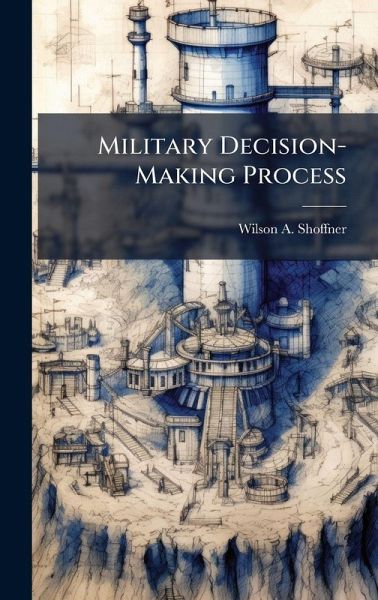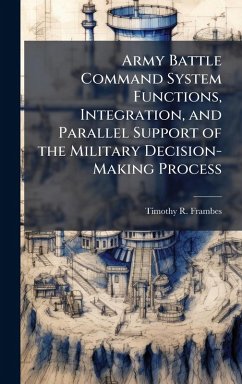
Military Decision-Making Process
Versandkostenfrei!
Versandfertig in über 4 Wochen
28,99 €
inkl. MwSt.
Weitere Ausgaben:

PAYBACK Punkte
14 °P sammeln!
The US Army's Military Decision-Making Process (MDMP) has been oft criticized as a time consuming and cumbersome process. Units typically devote so much time to developing and perfecting the plan that once the process is complete, there remains little time in which to implement it. If the time required by the MDMP were the only problem, then the solution might simply be to abbreviate or streamline the process commensurate with the time available. However, this is not the case. Even if planners are given a week, the MDMP still does not result in a "perfect" plan. In fact, recent experience at t...
The US Army's Military Decision-Making Process (MDMP) has been oft criticized as a time consuming and cumbersome process. Units typically devote so much time to developing and perfecting the plan that once the process is complete, there remains little time in which to implement it. If the time required by the MDMP were the only problem, then the solution might simply be to abbreviate or streamline the process commensurate with the time available. However, this is not the case. Even if planners are given a week, the MDMP still does not result in a "perfect" plan. In fact, recent experience at the National Training Center (NTC) indicates that despite extensive work by the staff, many plans are discarded as soon as an engagement begins. This experience is consistent with Moltke's adage "no plan survives the first shot." This author does not suggest that planning is pointless, in fact, planning is essential because it develops a thorough understanding of the problem throughout an organization. However a tactical plan is useful only if it can adapt to the dynamic nature of the battlefield. A significant shortcoming of the MDMP is that it is rigid, inflexible, and does not adapt well to "rapidly changing battlefield conditions." This monograph asserts that this method is fundamentally inappropriate for tactical planning because it results in only one solution (the selected friendly COA) optimized against only one possible set of circumstances (enemy COA). If circumstances change, the plan becomes useless because it is not adaptable to changing conditions. This monograph assesses the appropriateness of the MDMP for tactical planning as presented in the 1997 version of FM 101-5 and explores the utility of alternative methods and techniques. It begins by reviewing the history of the MDMP to determine the linkage between the Army's original purpose for the staff planning process and the MDMP as it exists today. The evolution of the MDMP is addressed in relation to changes in This work has been selected by scholars as being culturally important, and is part of the knowledge base of civilization as we know it. This work was reproduced from the original artifact, and remains as true to the original work as possible. Therefore, you will see the original copyright references, library stamps (as most of these works have been housed in our most important libraries around the world), and other notations in the work. This work is in the public domain in the United States of America, and possibly other nations. Within the United States, you may freely copy and distribute this work, as no entity (individual or corporate) has a copyright on the body of the work. As a reproduction of a historical artifact, this work may contain missing or blurred pages, poor pictures, errant marks, etc. Scholars believe, and we concur, that this work is important enough to be preserved, reproduced, and made generally available to the public. We appreciate your support of the preservation process, and thank you for being an important part of keeping this knowledge alive and relevant.












